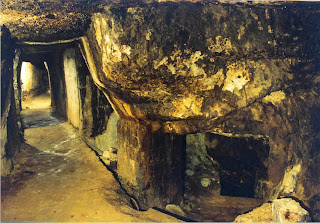Karl Marx, for instance, considered the Middle Ages significant as a step in social evolution: the social relations stablished through the feudal system determined modes of production. Max Weber (1864 - 1920, German sociologist), on the other hand, saw the feudal relationship to a lord as less important than the rise of the "occidental city" which developed in the West.
[Weber] saw in the history of medieval European cities the rise of a unique form of "non-legitimate domination" that successfully challenged the existing forms of legitimate domination [such as lords and kings—Tim] that had prevailed until then in the Medieval world. This new domination was based on the great economic and military power wielded by the organised community of city-dwellers ("citizens"). [The Max Weber dictionary: key words and central concepts]
(Much of sociology, after all, refers to "in-groups" and "out-groups." It may be of interest while discussing the rise of cities to note the difference between the terms citizen and denizen. The former comes into use in c.1275-1325 and refers to a native of a nation or city. The latter does not appear until c.1425-1475 and refers to a non-native inhabitant, suggesting a distinction being made in city-dwellers to those who "belonged" and those who did not.)
A 1995 article points out that these two opinions "marked simultaneously the beginning and the end of sociological inquiries into medieval culture, since sociologists have shown little interest ever since." [link] The author claims the period between 500 CE and 1500 CE was remarkable for many changes, not least of which was the shift from a "gift and barter" system to a profit-based economy that led to "the splendid display of wealth and powering the urban centers of trade." Also, that the rule in cities was far more stable than the previous rule by what Weber called "legitimate" systems.
The article outlines one of the issues with sociological study of the Middle Ages being that the chief source of records has a clerical bias, and offers no information on the everyday lives of ordinary men and women. The author uses the Waldensians to illustrate. The Waldensian movement was a lay religious movement of those aforementioned ordinary men and woman. What we learn about them, however, comes from clerical references that focus on the leaders of the movement, not the rank and file, and from to their "peculiarities," and from the records of the Inquisition that are designed to underscore practices considered vulgar and heretical.
The sociological study of the Middle Ages is fraught with error caused by assumptions due to the enormous gaps in information and understanding. This can also offer the would-be scholar a chance to treat it as clay to be molded according to his or her whims and interests, which can be tempting, but ultimately must be viewed with a critical eye.
I producing this post, I realized that I have hardly explained the Waldensians, a widespread lay religious movement that lasted centuries after its founding. I shall rectify this omission next time.















